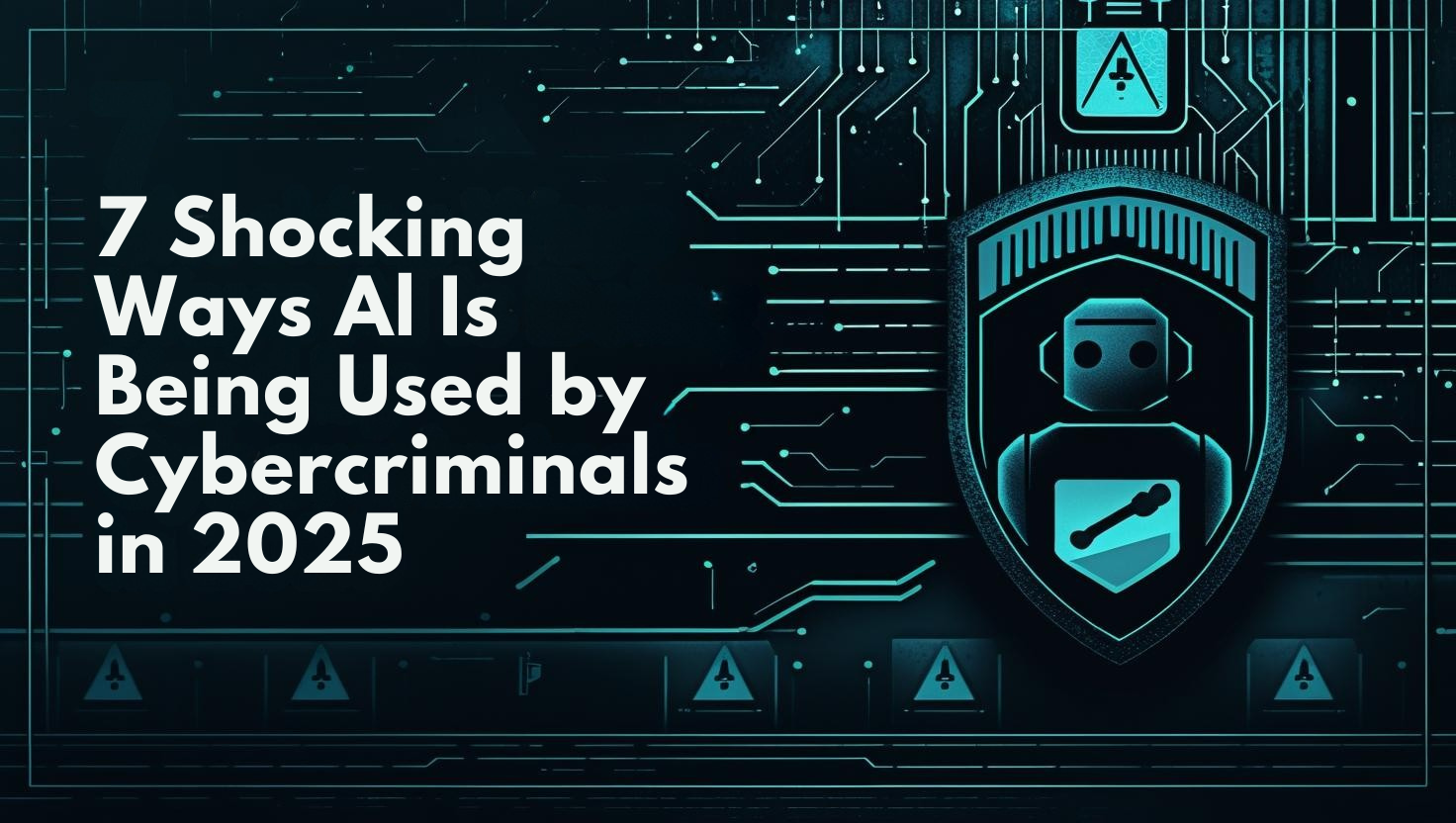You know what keeps me up at night? It’s not just the fact that cybercrime is expected to cost the world $10.5 trillion in 2025, it’s how AI is making every cybercriminal more dangerous than ever before. Here’s the thing, small business owners think they’re too small to be targets, but AI has changed the game completely. Let me tell you exactly how cybercriminals are weaponizing artificial intelligence, and why every business owner needs to pay attention right now.
The New Reality. Cybercriminals Using AI Powered Cyber Attacks Are Here
The statistics are staggering. AI generated phishing emails now have a 54% click through rate compared to just 12% for human-written content. That means cybercriminals using AI are more than four times more effective at tricking your employees. And here’s what really concerns me, 47% of organizations identify adversarial AI attacks powered by generative AI as their top security concern for 2025.

7 Ways Cybercriminals Are Using AI Against Your Business
1. Hyper Realistic Phishing Campaigns That Fool Everyone
Cybercriminals are using AI to create phishing emails that perfectly match your writing style, reference your specific contacts, and appear completely legitimate. These aren’t your typical Nigerian prince scams anymore. AI analyzes your communication patterns from social media, LinkedIn posts, and even leaked email data to craft messages that are virtually indistinguishable from real communications.
The scary part? These AI-powered phishing attacks can be created for as little as $50, making them accessible to every wannabe criminal.
2. Deepfake Voice and Video Scams That Cost Millions
With just three seconds of audio, AI can now replicate someone’s voice with startling accuracy. I’ve seen cases where cybercriminals impersonate CEOs in video calls, requesting urgent wire transfers or sensitive information. Earlier this year, a UK engineering firm lost $25 million to a deepfake scam where cybercriminals impersonated company executives.
3. AI Enhanced Malware That Adapts and Evolves
Traditional antivirus software is struggling because AI-powered malware can change its behavior based on how systems respond. Ransomware groups like FunkSec are now using AI-generated DDoS modules, making their attacks significantly harder to detect and stop.
4. Automated Vulnerability Scanning That Never Sleeps
Cybercriminals deploy AI to scan small businesses for vulnerabilities 24/7. These tools identify outdated software, misconfigured settings, and security gaps across websites, servers, and cloud environments with unprecedented speed and precision. What used to take hackers weeks of manual work now happens in hours.
5. Dark LLMs. AI Models Built for Crime
Threat actors are creating specialized AI models designed specifically for cybercrime. These “Dark LLMs” like HackerGPT Lite, WormGPT, GhostGPT, and FraudGPT are modified AI systems that bypass safety controls and are marketed on dark web forums with subscription-based access.
6. AI Powered Social Engineering That Exploits Human Psychology
AI is transforming social engineering attacks by enabling more convincing impersonations and automated interactions. Cybercriminals can gather extensive data on targets, create realistic synthetic media, and automate interactions that exploit human psychology with frightening effectiveness.
7. Credential Theft and Data Mining at Industrial Scale
AI processes and cleans massive logs of stolen credentials, session tokens, and API keys at lightning speed. Services like “Gabbers Shop” advertise using AI to improve the quality of stolen credentials, ensuring they’re valid, organized, and ready for resale.
The Business Impact: Real Numbers from Real Attacks
Let me share some sobering statistics from recent attacks in Pennsylvania and surrounding areas. Union County, Pennsylvania was hit by a ransomware attack that compromised systems containing law enforcement and court data, requiring extensive forensic investigation and ongoing credit monitoring services. A Pennsylvania law firm, Carpenter, McCadden & Lane, discovered their breach nearly 11 months after it occurred, affecting 7,900 individuals and exposing sensitive personal information including employee data and client information.
Here’s what these attacks cost:
- The average data breach cost for small businesses ranges from $120,000 to $1.24 million
- Small businesses lose around $25,000 on average from cyberattacks
- 60% of small businesses close within six months of a successful cyberattack
What This Means for Your Business
The cybersecurity landscape has fundamentally changed. Cybercriminals no longer need advanced technical skills because AI lowers the barrier to entry while making attacks more convincing and harder to detect 3. Every phishing email, every voice call, every piece of malware could be AI-enhanced and specifically designed to target your business vulnerabilities.
Your Next Steps
Don’t wait until you become another statistic. The threats are real, they’re evolving daily, and traditional security measures aren’t enough anymore. In my next article, I’ll show you exactly how to defend against these AI powered threats with practical strategies that won’t break your budget.
Book a 15 minute AI & Cyber Strategy Call to discuss how these threats specifically impact your business and what you can do about them today.
FAQ
Q: How can I tell if an email is AI generated? AI generated emails are getting harder to spot, but look for subtle inconsistencies in writing style, generic greetings despite personal information, and urgent requests for sensitive data or financial transactions.
Q: Is my small business really at risk from AI powered attacks? Absolutely. Small businesses are increasingly targeted because they often have weaker security measures. AI makes it cheaper and easier for criminals to scale their attacks against hundreds of small businesses simultaneously.
Q: What’s the first step I should take to protect my business? Start with employee training about AI powered threats, implement multi-factor authentication on all accounts, and establish verification protocols for any financial transactions requested through digital communications.



